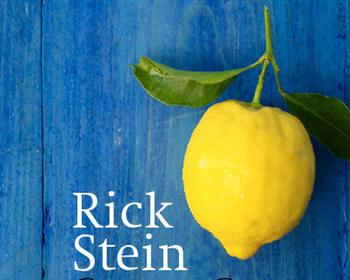As
fabulous as the main tourist attractions and busiest districts of
London are, sometimes you just need to get away from it all. So
for the merest price of a tube/train fare, here are the ten quirkiest
places to visit on days when Oxford St seems mundane and you’ve had
enough of the London Eye.
1. St Katherine’s Dock
Tucked
away neatly beneath the armpit of the Tower of London, St Katherine’s
Dock is an oasis in this busy district of London. Expensive
restaurants and unaffordable housing encircle a dock packed with yachts
moored by London’s sea-faring wealthy. Enjoy trotting over the
network of bridges which weaves across the dock and admire the ship
used in Hornblower when it’s here on one of its visits. The dock
is perfect for a hot chocolate by the water with the hint of a sea
breeze when the city leaves you feeling claustrophobic (nearest
station: Tower Hill)
2. Gabriel’s Wharf
A
funky pocket of colourful bohemia on London’s South Bank (just east of
Waterloo station), the wharf affords the opportunity to view London
from a different angle. Hire a bike to speed alongside the
Thames, jump on one of the rocking wooden sculptures or simply wander
around the exceptionally pretty shops which stock everything from
custom made bed frames and hats to jewellery and glassware. Enjoy
a drink al fresco in the middle of all the bustle or nibble a gourmet
pizza by the water. Such a charming place can’t be expected to
remain undiscovered (especially after starring roles in films such as
Love Actually and Closer) and, sure enough, Gabriel’s Wharf is packed
at the weekend – catch it in on an early summer evening during the week
and soak up the ambience.
(nearest station: Waterloo and Waterloo East)
3. Clink Street Gaol
One
of London’s most historic gaols, Clink St was so notorious that its
name has passed into slang. It stood on the South Bank next to
the Bishop’s Palace, Winchester House (of which only a fragment
remains), for five torturous centuries. It was initially used for
prostitutes from the Bishop’s own licensed Bankside brothels but by the
16th century the clientele was extended to include people
whose religious views went against those of the State – mostly
Catholics and dissenting Protestants. During the Civil War, the
rebellious Cromwell turned it into a prison for Royalists and when he
came to power sold off the Bishop’s Palace and the gaol fell into
disuse. It was used only for debtors until it was burned down in
1780 following a riot. The museum on the original site provides
an insight into the unsavoury past of ‘The Clink – the prison that gave
its name to all others’.
Clink St South Bank SE1
4. The George Inn
One
of the most intriguing pubs in London, this is a medieval gem tucked
out of sight behind Borough High Street in a secluded courtyard, a
bizarre anachronism backed in by curiously modern glass-fronted office
buildings. Mentioned in passing by Dickens, the pub was once
Shakespeare’s local and it is likely that he visited the tavern to
watch the plays which were often staged here due to a lack of theatres
in the area. The original tragically burnt down in 1676 but an
exact replica was built in its place. This galleried pub and
restaurant is well worth a visit, especially in the summer when it
stages Shakespeare plays.
77 Borough High Street, Southwark (nearest station: London Bridge)
5. Chislehurst Caves
A
mere 25 minutes train ride from Charing Cross, the caves are a perfect
escape from the city. They comprise of 20 miles of caverns and
passages all hewn by hand over 8000 years and divided into 3 sections:
Saxon, Druid and Roman.
The caves are a labyrinth of
tunnels and so dark that you can’t see your hand in front of your
face. For obvious reasons, you have to take an official tour to
explore the caves, led by an experienced guide and with your very own
gas lantern to lug round with you. The caves have an
extraordinarily colourful history and a tour affords the opportunity to
visit:
- The site of Druid human sacrifice: usually a quaking
child is pulled from the group to lie on the stone slab as the guide
demonstrates (by mime only) how the blood would have been drained off. - The set for several Dr Who episodes
- The largest (and spookiest?) WWII air raid shelter outside London
- The stage for a Jimmi Hendrix concert
- A subterranean church
- The
haunted pool where a local man drowned his wife and, with a constant
mist rising above it, you have the chance to study the cave drawings
made by the only successful participant in a competition held to see if
anyone could stay the night alone down there – one of his rivals had an
epileptic fit and another was so terrified by what he thought he saw
that he ran off down the wrong exit tunnel and knocked himself
unconscious against the cave wall.
Bring your
walking shoes and someone to hold your hand for a fantastic, slightly
petrifying, day out – and be warned, the caves were also used as a
Royalist hideout during the Civil War and in recent years, several
people walking at the back of tour groups have reported being tapped on
their shoulders by grinning, ghostly cavaliers.
A guided tour costs £4/person (nearest station: Chislehurst)
6. Kensington Roof Gardens
Atop
an innocuous looking high-rise building amid Kensington’s department
stores hovers one of London’s best-kept secrets: the stunning roof
gardens. There is a members only club but, on days where there
are no private events being held, the hoi polloi are allowed in to
experience the beauty of these tropical gardens above the pollution of
the city. The gardens are free to explore and the visitor can
choose between the Spanish Garden and its Court of Fountains, the
English Woodland Garden and the Tudor Garden. Where else in
London can you stroll 100ft in the air with a flock of flamingos?
99 Kensington High Street (nearest station: Kensington High Street)
7. The Temple of Mithras
This
ancient temple was discovered accidentally during construction
work. Unwilling for the project to be halted, this temple to the
Persian god of light and the sun was moved stone by stone to a new
location in Temple Court, Queen Victoria Street. It now lies in
an elevated position above ground which is rather misleading as it
would originally have lain partly or completely underground to
symbolise the cave in which Mithras was said to have slain the
primordial bull, so unleashing the powers of creativity and life into
the world. The religion rose to prominence in 3 AD but has much
earlier roots. It stressed courage, integrity and moral behaviour
and consequently found popularity with Roman soldiers and posed a
threat to early Christianity. Unsurprisingly, given its origins,
it was also keen on sacrifices and sharing bread and wine, particularly
on the festival of 25th December. This temple was built in the middle of the 2nd
century AD and is a forerunner in design to Christian churches wit its
aisles flanking a long nave leading to the altar, a touch ironic given
that Christians attempted to stamp out anything remotely Mithraic as
the religion achieved prominence.
8. Columbia Flower Market
The
market is hidden away in London’s East End with over 50 stalls selling
flowers, often unusual ones, at bargain prices. Also a great
place to get your hands on fresh coffee. Open from 8am to 2pm on
Sundays only, get to Old Street or Bethnal Green stations early to beat
the crowds and follow the trail of people clutching gorgeous blooms.
9. The Cutty Sark
The
Cutty Sark was a tea-clipper ship built in the 1860s for John Willis, a
fleet owner who ordered it to be built as a contender for the fastest
ship in the annual race to bring home the new season’s tea from
China. Although she didn’t fare so well in this competition, in
later years she was given a new lease of life importing wool from
Australia and repeatedly made the fastest time on this most gruelling
of voyages. Now taking a well-earned rest in a dry dock in
Greenwich this beautiful old ship can be explored 10am to 5pm all year
round for those who wish to play out their Captain Jack Sparrow
fantasies.
(nearest station: Greenwich)
10. Blackheath
A
mini-Hampstead in south London, Blackheath maintains the cosiness of a
village just outside the city. Said to conceal plague pits from
the time of the Black Death, these days the acres of beautiful green
heath are the setting for more picturesque activities such as
kite-flying and picnicking. The shops and farmer’s market make a
pleasant stroll round its few streets worthwhile and there are a slew
of restaurants, deli’s and bars to choose from. With its lovely church
standing alone on the open land, Blackheath is best seen floodlit at
night or in snow.


